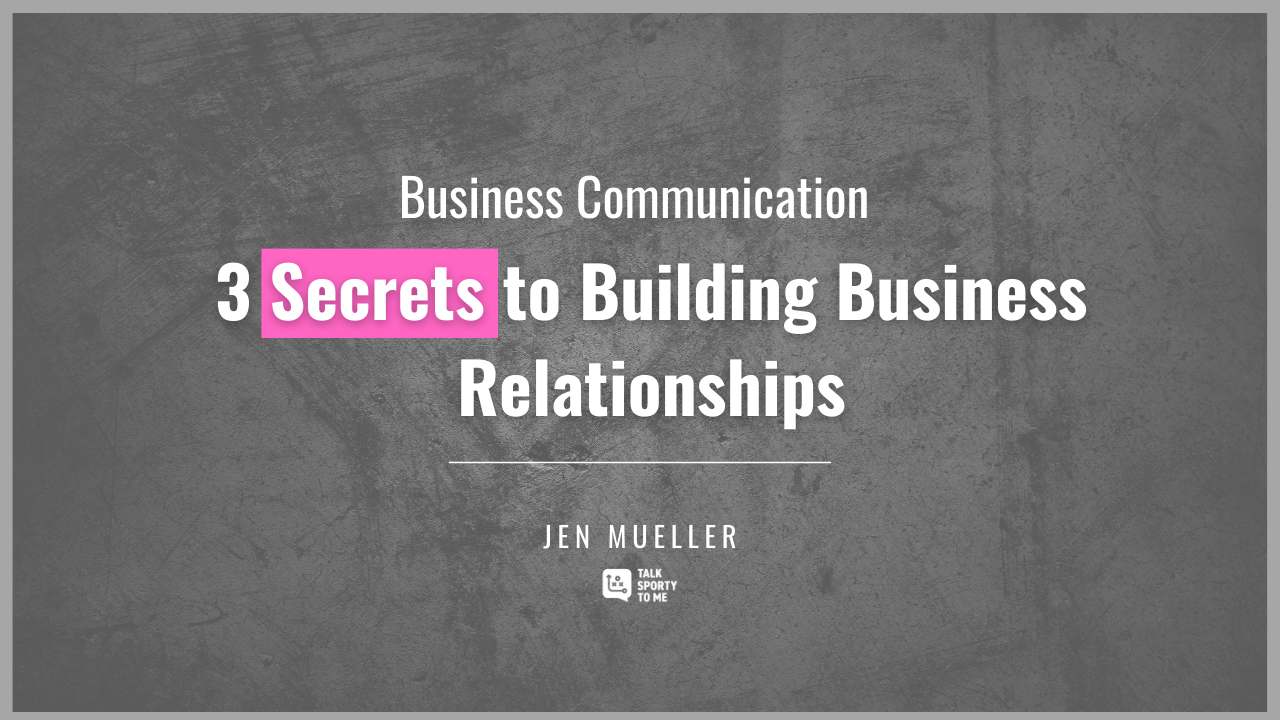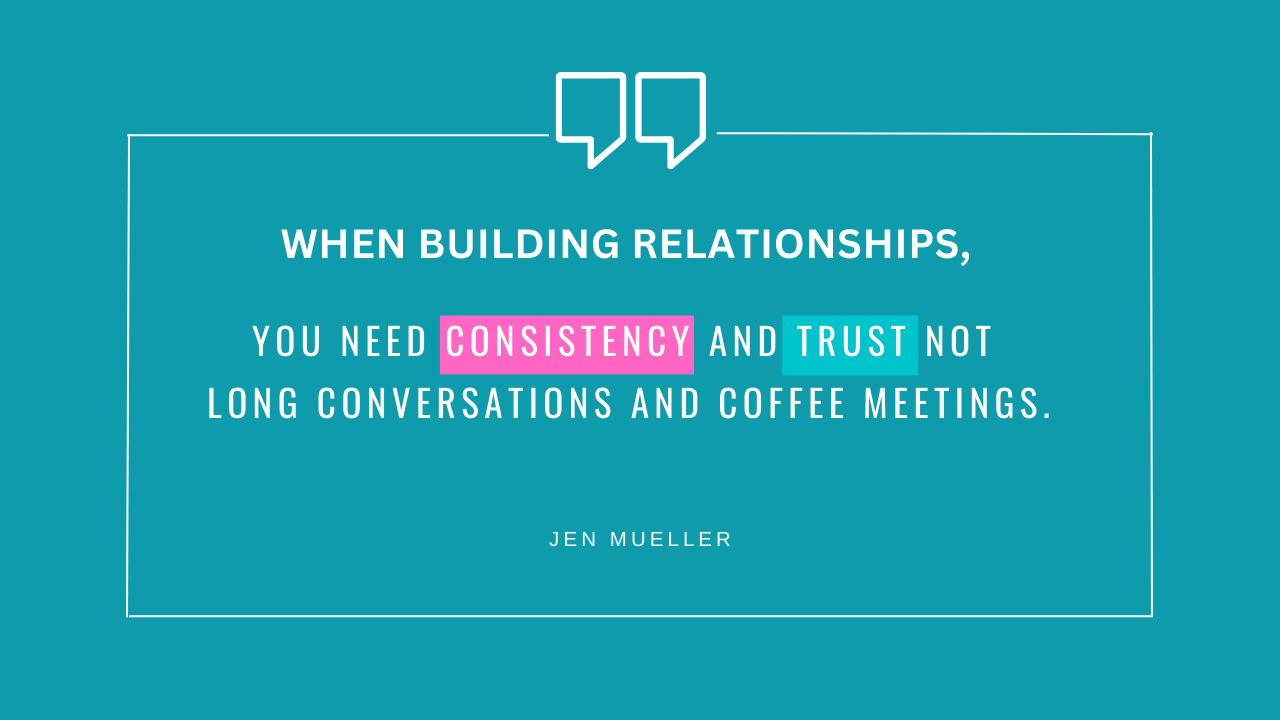Relationship Building in Locker rooms and Business

No one tells you how to build relationships inside a locker room. Come to think of it nobody tells you how to build relationships in general.
Sometimes it’s easy and comes naturally. Other times it feels more daunting - often because we’re overthinking and overlooking the actual building blocks for a relationship.
Here are the two things you need: consistency and trust.
Here’s what you don’t need: long conversations and coffee meetings.
Over the years I have established business relationships through traditional networking means. I’ve attended events, sent follow up emails, met for coffees, scheduled happy hours and connected on LinkedIn.
But I don’t do any of those things with the athletes I work with every day because that’s not how you build relationships inside a locker room.
I build relationships 30 seconds at a time and often one word at a time.
If someone would have laid out this plan 20+ years ago when I first started working in locker rooms I would have ignored it and looked for a more impactful way to establish credibility and earn the trust of the people I worked with. Back then I tried to prove myself in every conversation, reminding guys I knew what I was talking about. Here’s what I’ve realized since then, there’s no one thing I can say in a single conversation that will convince an athlete, or anyone else, they can trust me or talk to me.
There is one thing I say every single day that builds the foundation: Hello.
Say Hello. It’s the one word I use more than any other to build relationships. It doesn’t sound like much until you stop and think about how many times you don’t hear it. Like when you try to get your colleagues attention without realizing they’re wearing earbuds and can’t hear you. Or you pass someone jogging and the smile and wave you offered isn’t returned. Maybe it’s the stranger in the elevator who doesn’t answer back when you step in and say “good morning.” Don’t take hello for granted. It’s not a given. It’s also how every single relationship starts so why wouldn’t you use it to your advantage.
Seconds count. You don’t need more meetings in your day and you don’t need to schedule a getting-to-know-you-coffee to get to know someone. In fact, that approach is a nonstarter in a locker room. I might enjoy longer conversations, but those aren’t available. Most of the interactions I have are 30-60 seconds long and I make them count. I prepare the questions I ask in press conferences, which helps establish credibility. I know what I want to get out of a conversation when I approach them at their lockers making conversations easier and helping with the likability factor. And I do what I say I’m going to do.
Do what you say you’re going to do. It’s the fastest way to build trust and I find ways to do this in nearly every conversation I have in a locker room. It’s as easy as saying “I have two questions for you,” And then asking two questions. Literally that’s it. Or I might say “I’ll follow up with you tomorrow,” and then follow up with them tomorrow. Every time you do what you say you’re going to do, you prove you can be trusted. It goes a long way with professional athletes and everyone you meet in business.

This approach might sound overly simple, but it works and I have years of experience to back it up.
Walking into a locker room with a microphone doesn’t guarantee anyone will talk to me. No one wanted to talk following the Seahawks 37-3 loss in Baltimore during Week 9, but it was still my job to get post-game interviews. My goal was three. I got five. It’s not because they wanted to talk about one of the worst Seahawks losses in the last 15 years, it’s because I had established relationships.
I’ve counted on my approach to relationship building for the entirety of my time with the Seahawks. This is my 15th year on the Hawks sidelines. I have stayed in the same spot, but the roster has turned over a number of times. Players have retired, been traded, moved on and when they come back they still say hello, give me a hug and share life updates with me.
One word, doing what you say you’re going to do and maximizing a few seconds at a time work in building relationships.
The kicker to this strategy is that you have to put yourself in position to see the same people on a regular basis for this to work. That could be in an office, it could be attending the same workout classes every week, maybe it’s having coffee at the same time in the same spot a couple times a week.
Make a plan, stick to it and take advantage of all the opportunities you have to build relationships without adding more meetings or events to your schedule.


